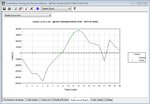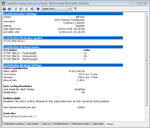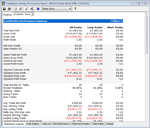BSD
Veteren member
- Messages
- 3,819
- Likes
- 988
Do we have a spec or not ???
Instrument: DAX
Time Frame: Weekly data
Indicator: MACD (Dunno the settings, think if I remember they had them in the print version along with more detail but unfortunately I threw that away, anyway can't find em online, but could always contact Hypo Bank who did the tests and ask)
Backtest period: 1989 - 2009 (A typical 20 year investing horizon and right up to when that article was published.)

http://www.capital.de/finanzen/100025900.html
As the 11 other strategies tested were long only - these are strategies for the unassuming public after all for many of whom shorting is presumably an unknown phenomenon - so I would presume this is also long only, so an upward MACD cross is a buy, but a downward cross is a flat, ie not short.







